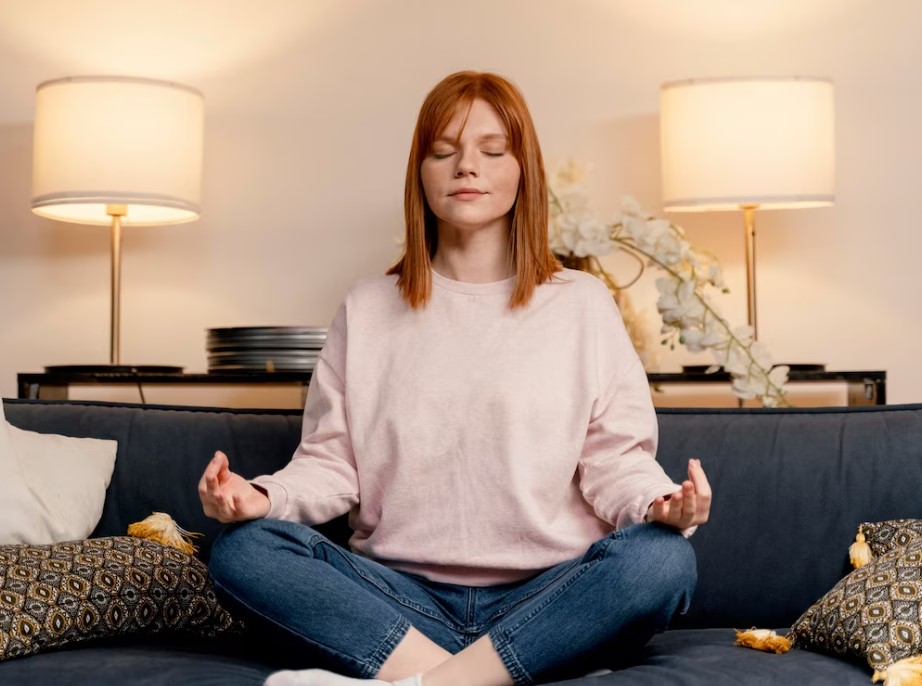Introduction
Meditation is a centuries-old practice that offers a gateway to self-awareness, inner peace, and a deeper connection with oneself and the world around us. In today’s fast-paced and often chaotic world, learning how to meditate can be a powerful tool to reduce stress, anxiety, and improve overall well-being. In this comprehensive guide, we will explore the essence of meditation and provide step-by-step instructions to help you embark on your meditation journey.
Part 1: Understanding Meditation
What is Meditation?
Meditation is a mental practice that involves training the mind to focus and redirect thoughts, fostering a state of clarity, calmness, and mindfulness. Through regular meditation, we cultivate an ability to be present, observe our thoughts without judgment, and experience a heightened sense of awareness.
Benefits of Meditation
The benefits of meditation are vast and scientifically backed. Some of the notable advantages include:
- Stress Reduction: Meditation helps lower cortisol levels, the stress hormone, promoting relaxation and reducing anxiety.
- Enhanced Concentration: Regular meditation improves focus and attention span, enabling better cognitive performance.
- Emotional Well-being: Meditation fosters emotional resilience and can reduce symptoms of depression and negative emotions.
- Improved Sleep: A consistent meditation practice can lead to better sleep quality and reduced insomnia.
- Increased Self-Awareness: Meditation helps individuals gain insights into their thoughts, feelings, and behaviors, leading to self-discovery.
- Enhanced Relationships: Mindfulness cultivated through meditation can improve empathy and communication skills, enriching relationships.
Part 2: How to Meditate: Step-by-Step Guide
Step 1: Find a Quiet Space
Select a peaceful environment where you won’t be disturbed. Create a sacred space that brings a sense of calmness, and if possible, eliminate distractions like electronics and loud noises.
Step 2: Choose a Comfortable Posture
Meditation can be practiced in various postures, including sitting, kneeling, or lying down. Ensure your spine is straight to facilitate a smooth flow of energy. Find a posture that is comfortable for you and allows you to remain still for the duration of your meditation session.
Step 3: Set a Time Limit
Decide on the duration of your meditation session. Beginners can start with 5 to 10 minutes and gradually increase the time as they become more experienced.
Step 4: Focus on the Breath
Close your eyes and take a few deep breaths to settle into the present moment. Shift your focus to the sensation of your breath, either at the tip of your nose or the rise and fall of your abdomen. Observe each inhale and exhale without trying to control or manipulate the breath.
Step 5: Cultivate Mindfulness
As you focus on your breath, thoughts may arise. Instead of getting caught up in them, acknowledge their presence, and gently bring your attention back to the breath. Be patient with yourself; it’s normal for the mind to wander.
Step 6: Use a Mantra (Optional)
If you find it challenging to anchor your attention on the breath, you can use a mantra—a word or phrase repeated silently—to help center your mind. Examples include “peace,” “love,” or “Om.”
Step 7: Embrace Loving-Kindness Meditation (Optional)
Loving-Kindness Meditation involves directing love, compassion, and well-wishes towards yourself and others. Visualize sending love to yourself, loved ones, acquaintances, and eventually all living beings.
Step 8: End the Meditation Gradually
As your meditation time comes to a close, gently become aware of your surroundings. Take a few deep breaths and slowly open your eyes. Carry the sense of calm and mindfulness with you as you go about your day.
Part 3: Tips for a Successful Meditation Practice
- Consistency: Regularity is key to experiencing the full benefits of meditation. Aim to meditate at the same time and place every day.
- Be Patient: Meditation is a skill that requires practice. Be kind to yourself and avoid self-criticism when your mind wanders.
- Create Rituals: Establish a pre-meditation ritual, such as lighting a candle or setting an intention, to signal the mind that it’s time to meditate.
- Join a Community: Consider joining a meditation group or online community to share experiences and insights with like-minded individuals.
- Experiment with Techniques: Explore different meditation techniques, such as guided meditation, body scan, or walking meditation, to find what resonates best with you.
- Incorporate Mindfulness into Daily Life: Extend the principles of meditation to your everyday activities by practicing mindful eating, walking, or listening.
Also Read :- what is the law of attraction
Conclusion
Meditation is a powerful practice that can lead you on a transformative journey of self-discovery and inner harmony. By following this step-by-step guide and embracing the benefits of meditation, you can experience a deeper connection with yourself and the world around you. Remember that meditation is a personal journey, and there is no right or wrong way to meditate. Find what works best for you, be patient with the process, and let meditation become a sanctuary of peace and mindfulness in your life.
Frequently Asked Questions (FAQ) about Meditation
What are the benefits of meditation?
Meditation offers numerous benefits, including stress reduction, improved concentration, emotional well-being, better sleep, increased self-awareness, and enhanced relationships. Scientific research has supported these benefits.
How do I start meditating?
To start meditating, find a quiet space, choose a comfortable posture (sitting, kneeling, or lying down), and set a time limit for your practice. Focus on your breath or use a mantra to anchor your attention. Be patient with your wandering thoughts and gently bring your focus back to the present moment.
How long should I meditate each day?
For beginners, starting with 5 to 10 minutes of meditation per day is recommended. As you become more comfortable with the practice, you can gradually increase the duration to 15 minutes or longer. Consistency is more important than the length of each session.
Can I meditate lying down?
Yes, you can meditate while lying down, especially if sitting for extended periods is uncomfortable. However, be mindful not to fall asleep, as meditation is a state of alert awareness.
What if my mind keeps wandering during meditation?
It’s normal for the mind to wander during meditation. When you notice your thoughts drifting, gently acknowledge them without judgment and redirect your focus back to your breath or chosen point of meditation.
Is meditation a religious practice?
While meditation is deeply rooted in spiritual traditions like Buddhism and Hinduism, it is not inherently religious. Meditation can be practiced by people of all faiths or no religious affiliation as a secular means of enhancing well-being.
Can meditation help with anxiety and stress?
Yes, meditation is known for its stress-reducing benefits. Regular meditation practice can lower cortisol levels (the stress hormone) and promote relaxation, helping to alleviate anxiety and manage stress more effectively.
Can I meditate if I’m not a spiritual person?
Absolutely! Meditation is accessible to everyone, regardless of their spiritual beliefs. The practice can be approached from a secular perspective, focusing on mindfulness and self-awareness without any religious connotations.
Can children meditate?
Yes, children can meditate and benefit from it as well. There are mindfulness and meditation techniques designed specifically for children, helping them develop emotional intelligence, focus, and coping skills.
How do I know if I’m meditating correctly?
There is no right or wrong way to meditate, and everyone’s experience is unique. The key is to be patient and non-judgmental with yourself. If you feel calmer, more focused, or more at peace after meditating, you’re likely on the right track.
Can I meditate if I have a busy mind or racing thoughts?
Yes, meditation is especially beneficial for those with busy minds. The practice helps calm the mind and develop the ability to observe thoughts without getting entangled in them.
Should I meditate with my eyes open or closed?
Both options are valid, but many people find it easier to meditate with their eyes closed to minimize external distractions. If you choose to meditate with your eyes open, keep your gaze soft and unfocused.
Can I meditate using apps or guided recordings?
Yes, meditation apps and guided recordings can be helpful, especially for beginners. They provide structure and guidance during your meditation sessions.
Is meditation safe for everyone?
Meditation is generally safe for most people. However, if you have a history of severe mental health issues, such as psychosis or schizophrenia, or any medical conditions, consult with a healthcare professional before starting a meditation practice.
Remember, meditation is a personal journey, and what matters most is finding a practice that resonates with you and fits into your lifestyle. Be patient, compassionate with yourself, and enjoy the transformative benefits of meditation.















Pingback: Social Security Benefits in 2023
Pingback: 51 YouTube to MP3 converter online